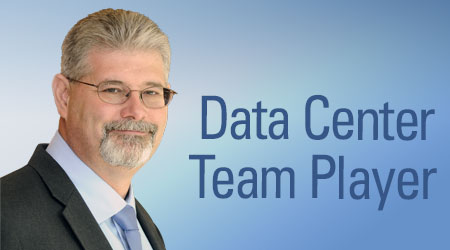Facilities Management and the Art of Persuasion
For Smith, soft skills like listening well and making a strong argument, are as critical as his mechanical aptitude and engineering expertise.
While Smith’s job requires mechanical aptitude and a lot of engineering expertise, soft skills are also important for someone at his level, since he often must persuade a variety of stakeholders to adhere to his specifications and scheduling. Thus, the art of persuasion is a key requirement.
“Steve is a great listener, and he is detail-oriented when he listens,” Chastain notes. “He will work through a problem with his team and engage all parties when he is troubleshooting an issue.”
Those who want be successful in managing a data center “should absolutely invest time in leadership skills training,” Smith says. Communication has to flow well between facilities management and the IT department. “Security is another area where you have to be joined at the hip,” he says. “There has to be a collaborative environment where both sides work for the best interests of the corporation.”
Interpersonal skills also come in handy when selecting project participants. In the best-case scenario, they should have sufficient experience to allow them to be “a contributor rather than simply a provider.” Vendor partners must be able to offer advice on design development and methods for saving money, says Smith. “The best vendor partners will make an effort to view the project from the owner’s perspective and recommend things that would help them if they had to operate it for the next 20 years,” Smith explains. He notes that experienced contractors offer free expertise to those who are smart enough to ask questions and listen to the answers.
“I like to tap into my vendors,” Smith says. “With anything new that’s coming out, I’m asking them questions to understand the differences.” With new UPS technology, for example, Smith wants to know not only how this new equipment will be operated, but what’s different about the software. “What kind of alarms become latching alarms? What kind of issues can I expect to face as we begin to load it up?”
Of course, managing mission critical facilities can be very stressful. The best way to handle this inevitability is by maximizing training for himself and his staff, Smith says. “Training and development of my team helps them be more engaged in the processes of managing the data center resources and ensuring uptime and availability,” Smith continues. The staff is happier if they feel they know what to do in an emergency. “There is less fear of the unknown when there is less unknown to fear,” Smith says.
Maryellen Lo Bosco is a freelance writer who covers facility management and technology. She is a contributing editor for Building Operating Management.
Email comments to edward.sullivan@tradepress.com.
Collaborative data center design
Steve Smith, director of physical IT network at Arvest Bank Operations, has been responsible for building, renovating, or expanding enterprise-class data centers 10 times. That experience has taught him that collaboration is vital in the design of a data center. At this year’s Critical Facilities Summit, he will share the lessons he has learned about using collaborative design to program critical facilities for scalability, flexibility, maintainability, and longevity.
Related Topics:














